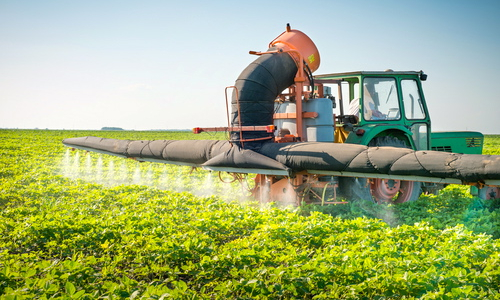
An Insight Into Pesticides Usage in Australia
Australia’s use of pesticides has increased since the beginning of the 1990s. The fact that harmful and irritating animals are kept under control has provided multiple benefits to urban and rural environments. Cases of chemicals resistant pests, and environmental issues have prompted numerous discussions. A wholesale chemical company these days focus on producing the best pesticides for the sake of Agriculture.
However, a significant presence of practitioners involved in the management of pesticides has played an essential role in improving the quality of crops. For a good harvest and reduction of loss, you need to emphasize the proper usage of pesticides. In this post, you will get to learn about the use of pesticides in Australia and will be able to get an overview of the pest control scenario.
What are common pests in Australia and how to get rid off them?
Many different types of pests are prevalent in Australia. Among them, the most popular ones and their treatments are:
Termites
Top in this list are termites which are found at least 1 in every four households of Australia. These pests are very harmful to the production of crops. They cause an average loss of $8000. Bifenthrin is one of the most widely used pesticides for termite control.
Mice
Another common pest in the house is a mouse. They remain active throughout the year. They cause damage to furniture and food. Mice, if left unattended, will spread disease in the host household.
Alpha-Chloralose is widely regarded as one of the most effective methods for controlling mice and other vertebrate pests.
Wasps
Wasps are a form of insect that stings. According to Patrick Hona, an entomologist at the Museum of Victoria, about 10% of wasp nests survive the winter and flourish in the spring.
There are approximately 30,000 wasps in each nest of Western Australia. Spraying wasps with 350g Yates and Nest Killer Insecticide is a generally healthy way to deal with them.
Grasshoppers
In Queensland, an outbreak of yet another common pest, the grasshopper, was confirmed in 2015. Although grasshoppers may not seem to be a nuisance to city dwellers, swarms may kill vast swaths of the crop, posing a serious threat to farmers and city dwellers.
Grasshoppers can be handled with a concentrated spray certified for organic use – a good example is Azamax (Azadirachtin). Wholesale chemical company these days is having a good return by producing this chemical.
Ants
Even though many harmful creatures rule the barren plains of Australia’s Outback, only a few can equal the ferocity and terror of these ants. Over $330 million has been invested in eradication campaigns over the last 15 years, with mixed results. Brunnings Ant Kill and Richgro Ant Killa insecticides can be used to kill ants.
Bedbugs
Bedbugs are common insects that affect the production of crops. To control bedbugs, bed bug barrier powder and bed bug glue traps are widely used. Moreover, Talstar is also recommended for flies.
In Australia, over 8000 pesticide products have been officially approved for use (25 percent of these being used in households and 75 percent in agricultural settings). These are available over the counter at hardware stores or supermarkets and are primarily intended for use in and gardens and homes.
Experts are to use pesticides in Australia.
The fact that these pesticides are readily accessible does not imply that they are always harmless. Many of them are poisonous, and if misused, can have significant health consequences for the consumer, their families, and the environment.
As a result, pesticide use in Australia is best left to experts to optimize the benefits while minimizing the risks. Nonetheless, achieving optimum chemical pesticide use remains a difficult resource management challenge.
Even though widespread pesticide use has improved living standards and global food security, significant challenges still prevail.
How much do Australians spend per year on pesticides?
According to the Australian Bureau of Statistics, Queensland families spend $180 million a year managing pests. However, when you consider production losses and natural resource depletion for a wholesale chemical company, the net cost for Queensland’s economy may be higher. Termite extermination costs an average of $3,500 per infestation in a typical home.
Pesticide Use and Its Consequences in Australia
Pesticide use has dominated vast areas of farmland and urban areas in Australia for a long. Consistent application of these chemicals is an efficient way to preserve human life and boost productivity in both the household and agricultural sectors.
Overuse and dependence on pesticides, on the other hand, have resulted in the development of resistance in some insects. To get control of the issue, this has often emphasized the use of ever-increasing amounts of insecticides.
Overuse of insecticides, for example, was documented to cause resistance in the cotton bollworm in the 1990s, a pest that nearly devastated Australia’s cotton industry. Furthermore, long-term use of broad-spectrum pesticides (which are among the cheapest chemicals in the country) appears to eliminate all beneficial insects.
It’s important to note that the consequences of repeated chemical spraying can be far-reaching. Although the results might not be apparent right away, the long-term effects may be disastrous.
The Future Use Of Pesticides
Researchers are trying to establish long-term pest-control strategies for homes and farms. The aim is to develop friendly goods for humans and the environment, and other beneficial insects. A research team from the Australian Institute for Bioengineering and Nanotechnology and the Queensland Alliance for Agriculture and Food Innovation recently developed “Bio-Clay,” a very effective pesticide.
According to AIBN, this unique clay would have a wide range of benefits in the coming decades, with its application expected to extend into a broader range of local applications.
The use of nanotechnology in pest management
Pesticide usage in Australia is likely to shift to a more nanotechnological approach in the future. This technology is in line with the country’s vision of being a prosperous and environmentally friendly center. Other patterns we can expect to see in the future include:
1)Demand for transgenic crops is rapidly increasing.
2)Chemical industries will be more integrated with seed and food processors.
Conclusion
The use of proper pesticides has made the life of farmers easy these days. In this article, we have tried to let you know about the usage of pesticides all across Australia. We back you to use the correct and the most effective ones for your farming.

